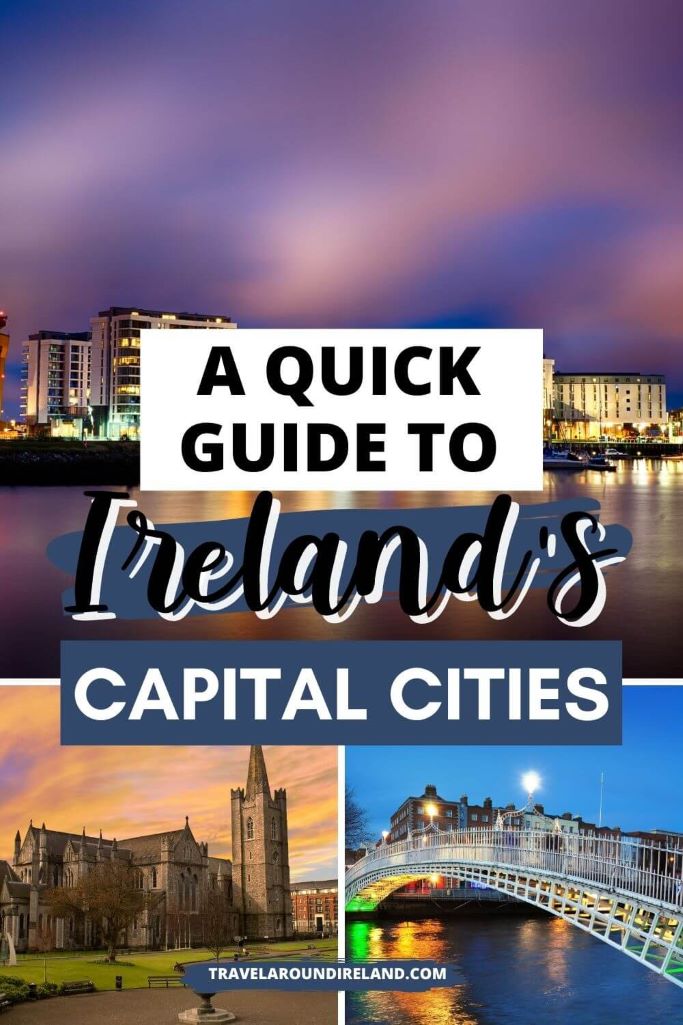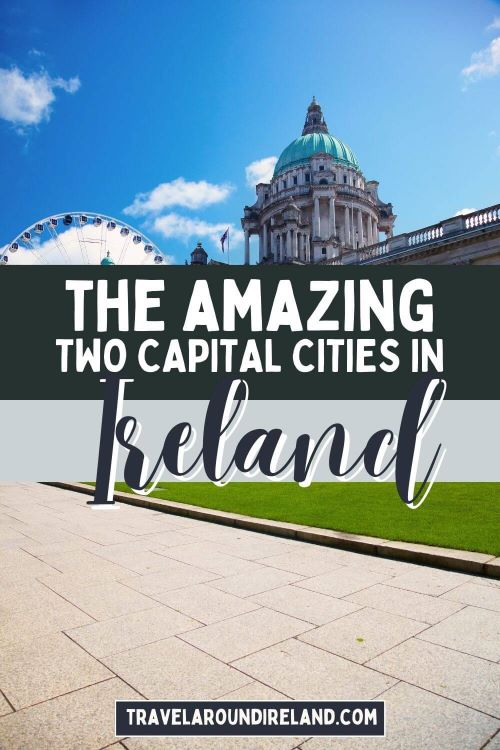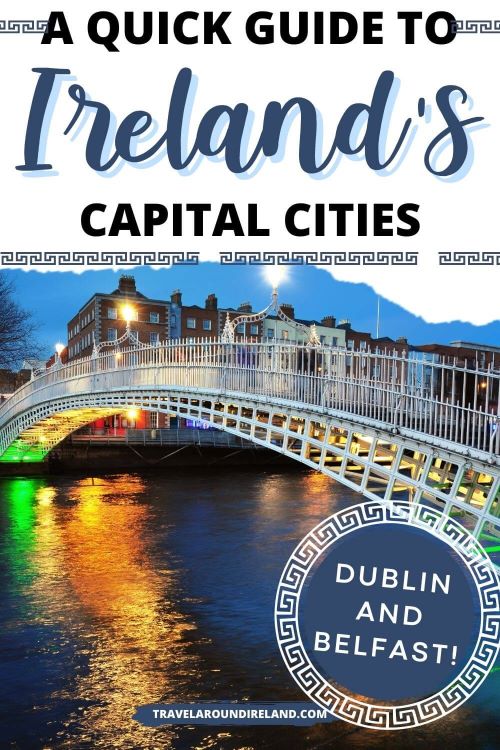If you have been wondering what are the capitals of Ireland, then you are in the right place. Discover the two capital cities that are located on the island of Ireland, facts about them, and some of the best places to visit in each one.
Ireland is a beautiful country that is situated in the North Atlantic Ocean, and it is home to some of the world’s most amazing attractions. It plays host to two capitals – Dublin and Belfast. The reason there are two capital cities located in Ireland is the fact that the Emerald Isle is made up of two countries, the Republic of Ireland and Northern Ireland.
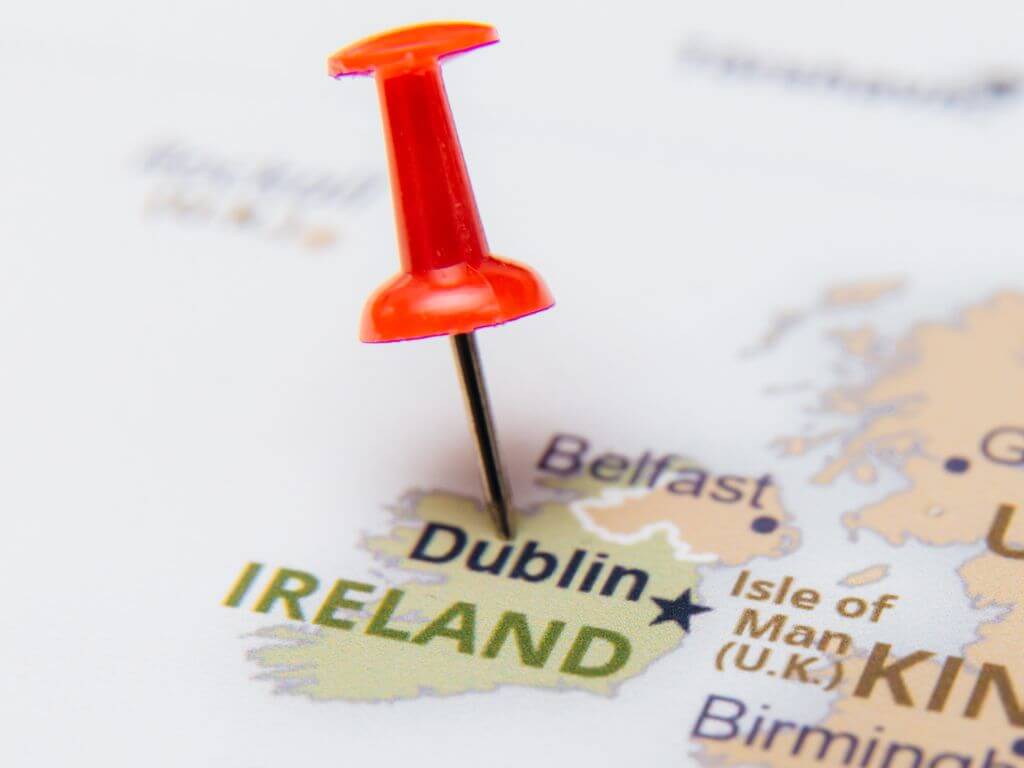
Northern Ireland is a member of Great Britain or the United Kingdom, while the Republic of Ireland is an independent, sovereign state. To discover more about why there are two countries in Ireland, read my post about Ireland versus Northern Ireland and their differences.
Both Dublin and Belfast have plenty to offer visitors, with both capitals boasting a variety of attractions and experiences that will ensure a memorable trip. Whether you are looking for an exciting night out or a peaceful stroll through the streets, these two cities have something for everyone!
So, if you are planning your next getaway and want to experience the capitals of Ireland, discover why you should consider visiting both Dublin and Belfast.
What is the capital of Ireland (Republic)?
The capital of Ireland is Dublin and is also the largest city on the Emerald Isle. Located in the county of the same name, Dublin is an exciting city with a rich cultural history.
It is known for its vibrant culture, iconic landmarks, bustling nightlife, and friendly people, and is home to iconic landmarks such as Trinity College, Croke Park Stadium, Dublin Castle, and St Stephen’s Green. It also boasts some great restaurants, pubs, and shops for visitors to explore.
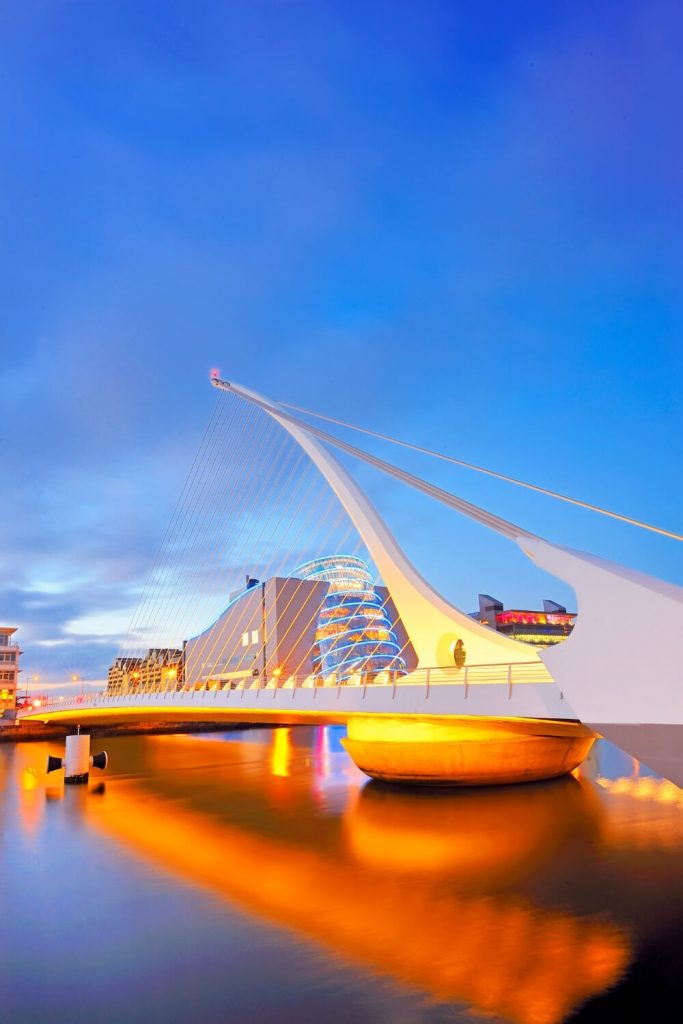
When did Dublin become Ireland’s capital?
Dublin has been the capital of Ireland since 1922 when Ireland gained independence from Britain. Initially, it was the capital of what was known as the Irish Free State, following the partition of Ireland (ref).
Facts about Dublin
Dublin is located on the east coast of the Emerald Isle and has a coastline that sits on the Irish Sea. It is one of the 26 counties of the Republic of Ireland and is located within the province of Leinster.
Dublin began as an early settlement in the 7th century by the Gaels before being settled by the Vikings who are recognised as establishing Dublin as a city in 988 AD. The Vikings remained in control until the Norman Invasion of Ireland.
Dublin has gone through many changes since the Vikings settled the area including being under British Rule until 1922.
Dublin City has an area of 117.8km squared (45.4 square miles) while the entire metropolitan area of Dublin is 1000km squared (400 square miles).
The population of Dublin City is almost 600,000, while the metropolitan area has a population of 1.4 million. The Greater Dublin area has a population of 2 million, constituting around 40% of the entire population of the Republic of Ireland.
Dublin sits on the mouth of the River Liffey, the major river that runs through the city. It splits the city into two halves: the Northside, and the Southside. The county is also bordered in the south by the Dublin Mountains, a sub-range of the Wicklow Mountains, and to the west and north by low-lying farmland.
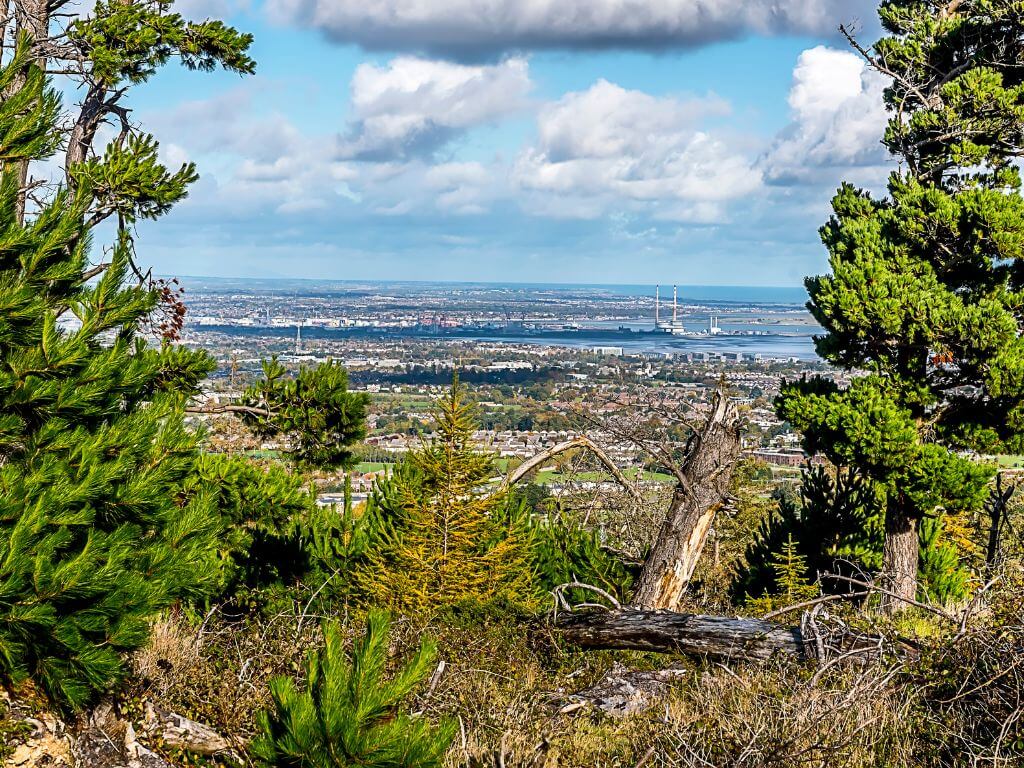
The temperature in Dublin has an average high of 9˚C/48F in winter and 20˚C/68F in summer during the daytime, with average lows at night of 4˚C/39F and 13˚C/55F, respectively. You can read my post about the best time to visit Dublin to find out the best months of the year to visit the city.
Dublin has also made a name for itself in the business sector with the European headquarters of Microsoft being located in the city, and branches of Google, Amazon, Paypal, and Yahoo also located in the city.
Best places to visit in Dublin
As one of the top cities to visit in Ireland, Dublin has plenty to offer anyone who visits.
One of the most popular tourist attractions in Dublin is Trinity College. Founded in 1592, it is Ireland’s oldest university and houses one of the country’s greatest cultural treasures, the Book of Kells. The college also boasts some beautiful parks and gardens for visitors to enjoy.
Another must-see stop in Dublin is St Patrick’s Cathedral. This stunning Gothic building was constructed in 1220 and is the largest church in Ireland.
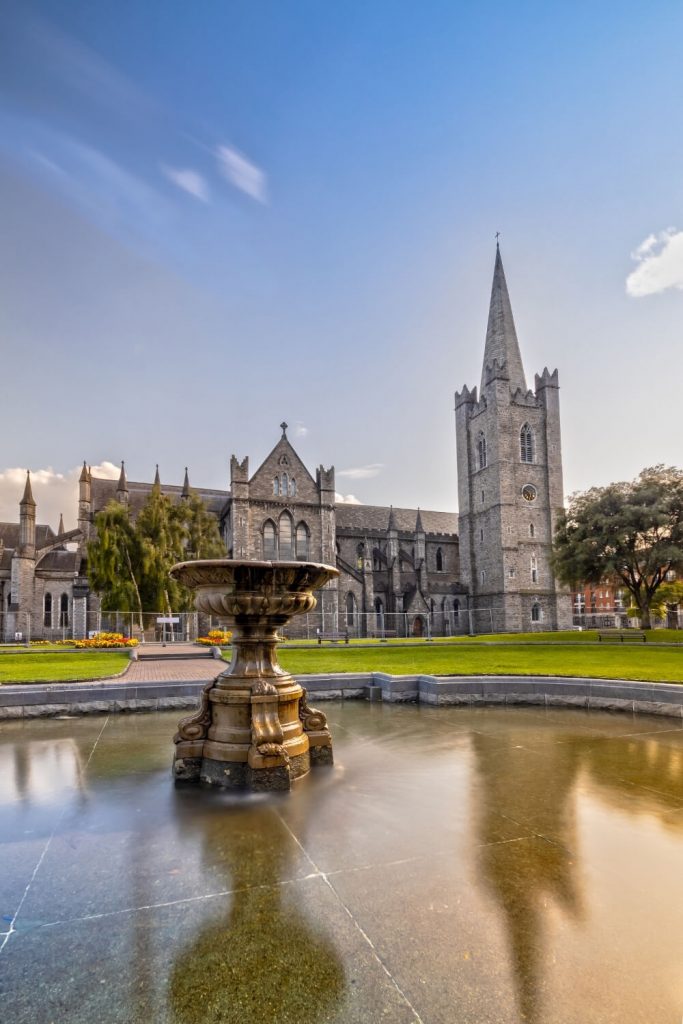
Dublin Castle, which dates back to the 13th century, is another popular site and worth a visit. It boasts multiple grounds and gardens that are open to visitors, as well as a beautiful courtyard where you can enjoy traditional Irish music on certain days of the week. You can take guided tours of the State Apartments or visit the incredible Chester Beatty Library. This library is one of the best free things to do in Dublin.
Other castles to visit in Dublin include Malahide Castle, part of which dates to the 12th century, and its 260 acres of parkland. Clontarf Castle, now a luxury castle hotel in Ireland, dates from the 19th century but there has been a castle on the site since the late 12th century.
You can also enjoy the city alone or on a guided tour. Consider taking a guided walking tour of the city to get your bearings and discover some of the hidden gems only your guide will know about. Or if you want something a bit more interesting, hop on a whiskey tour of Dublin to discover some of the best whiskey Ireland produces.
Finally, no visit to Dublin would be complete without a trip to the Guinness Storehouse. This is one of Ireland’s most famous attractions and offers visitors an insight into Irish beer culture. Here you can learn all about brewing techniques from master brewers and sample some of the best Guinness in Ireland.
No matter your interests, you are sure to find plenty of places to visit in the capital of the Republic of Ireland.
What is the capital of Northern Ireland?
Belfast is the capital of Northern Ireland and is also the largest city in Northern Ireland. It is located in County Antrim and is a vibrant city filled with architecture, interesting murals, and street art and plenty more for visitors.
It is home to the Titanic Belfast Museum, which pays tribute to the famous ship that was built in Belfast’s Harland & Wolff Shipyard. Other attractions include Stormont Estate and Cave Hill Country Park.
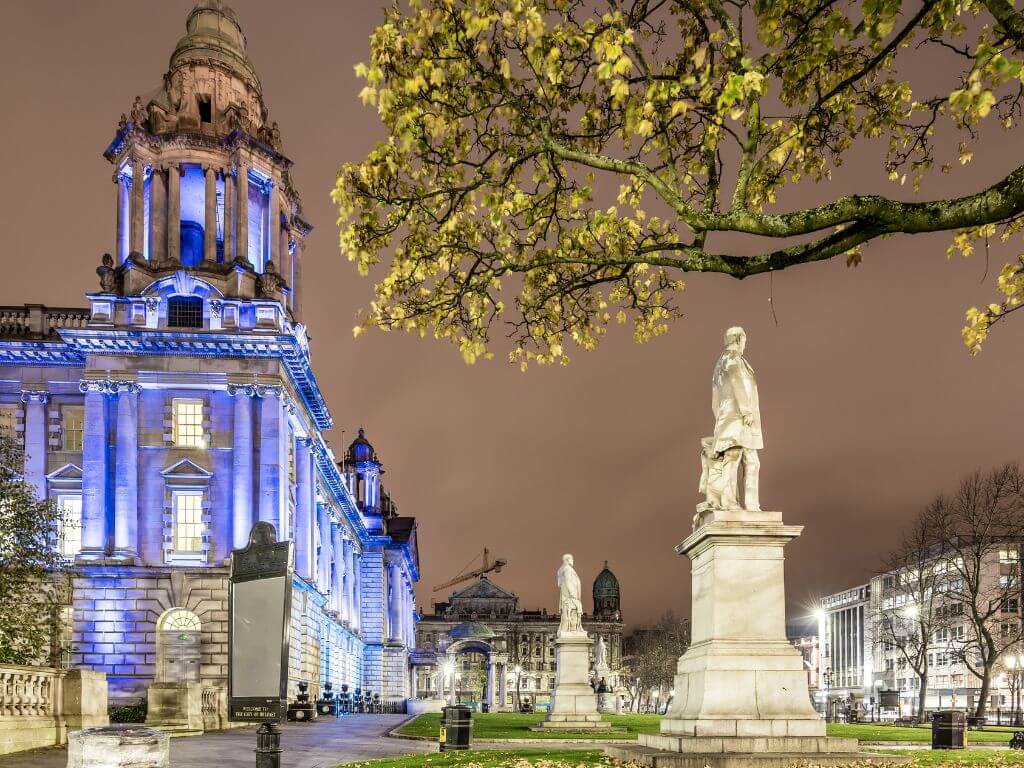
When did Belfast become the Northern Ireland capital?
Belfast became the capital of Northern Ireland in 1921 when the partition of Ireland was underway. The partition of Ireland created the Republic of Ireland which constituted 26 counties, and Northern Ireland, part of Great Britain, which constituted 6 counties (ref).
Facts about Belfast
Belfast is located on the northeast coast of the Emerald Isle and has a coastline that sits on the Irish Sea. It is one of the 6 counties of Northern Ireland and is located within the province of Ulster. It is also the second-largest city on the Emerald Isle after Dublin.
Belfast has been occupied as a site since the Bronze Age and remained a settlement of little importance until it was established as a town in 1613 during the plantation years (a period of time in Ireland’s history during which Irish-owned land was confiscated by the British Crown and given to English Lords and other colonists, many of whom were Protestant).
Belfast grew from there into the city it is today, largely thanks to rapid industrial growth in the city during the 19th century.
In 1921, Belfast became the capital of Northern Ireland, when the 26 counties of Ireland became the Irish Free State.
Belfast has an area of 132.5km squared (51.16 square miles).
The population of Belfast City is just over 345,000, while the metropolitan area has a population of just over 671,000.
Belfast sits on the western edge of Lough Belfast and at the mouth of the River Lagan (pictured), the major river that runs through the city. Belfast City is bordered by a series of hills to the north and northwest, while the Castlereagh Hills overlooks the city from the southeast.
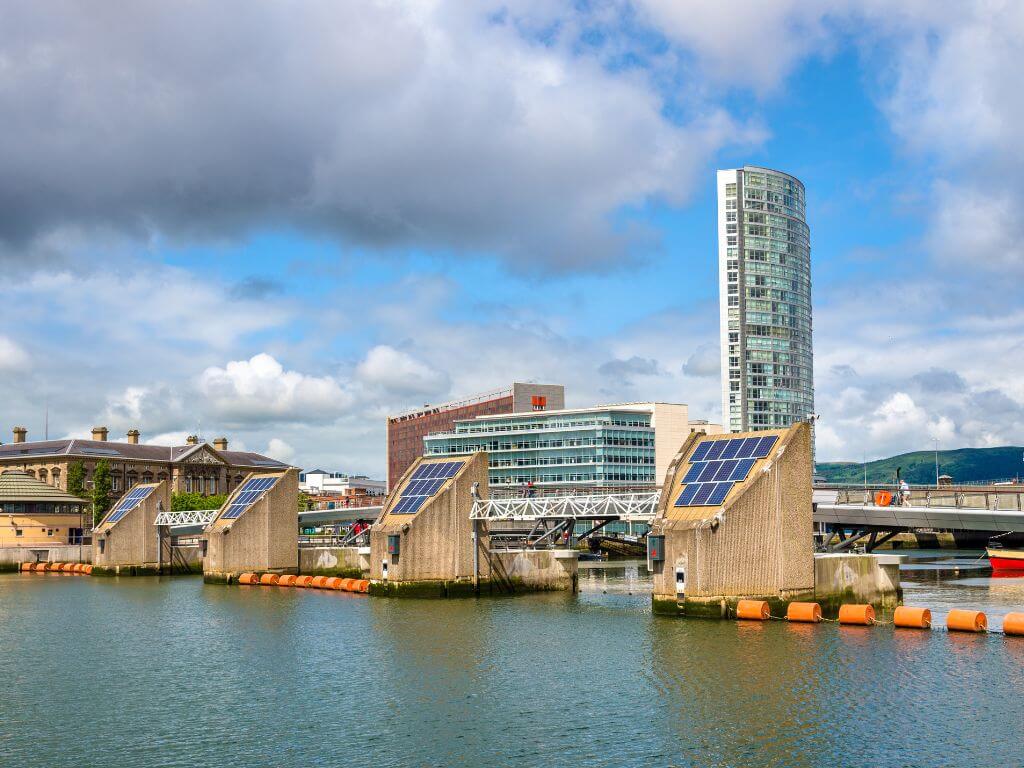
The temperature in Belfast has an average high of 8˚C/46F in winter and 19˚C/66F in summer during the daytime, with average lows at night of 3˚C/36F and 12˚C/53F, respectively.
Belfast has undergone rapid changes since the end of the Troubles, and many areas of the city have undergone large-scale rejuvenation including the Titanic Quarter which has become a major tourist area in the city.
Best places to visit in Belfast
As the second largest city in Ireland, you won’t be short of things to see and do in Belfast.
If you like architecture, then Belfast City Hall is a must-visit. As one of the most iconic and impressive monuments in the city, it is free to visit and is also where you’ll find one of Ireland’s best Christmas markets in December.
Visitors can also explore some of Belfast’s most beautiful parks including the Botanic Gardens, Cave Hill Country Park, and Ormeau Park.
For those wanting to explore Belfast’s history, there is the Titanic Dock and Pump House, as well as the Ulster Folk and Transport Museum. The Titanic Quarter is the area of the city where the famous ship was built, and Titanic Belfast is now a major attraction in the city.
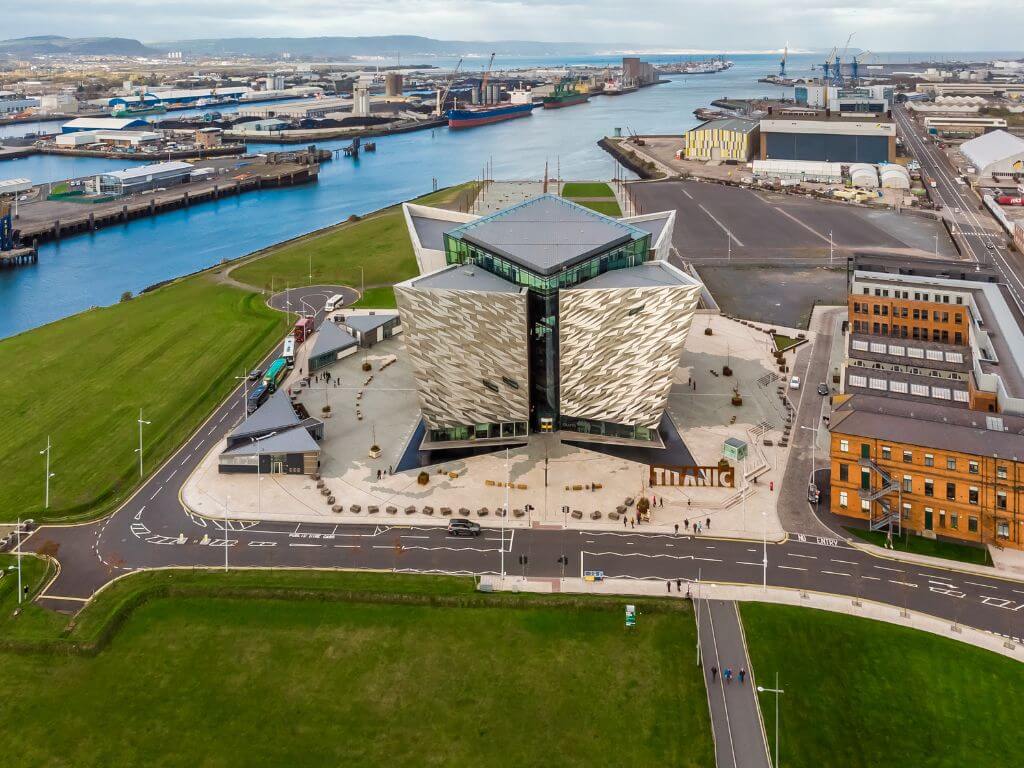
Other must-see attractions include the Albert Clock Tower, St Anne’s Cathedral, and Crumlin Road Gaol.
Whatever your interests may be, Belfast has something for everyone and is a city worth visiting.
The capitals of Ireland, Dublin and Belfast, offer a unique experience for any traveller. Both cities have a rich history and vibrant cultures. Whether you’re interested in art and architecture, music and dance, or simply exploring the city streets, both capitals have something to offer.
With plenty of places to stay, good transport links between the two cities, and a wide variety of activities for visitors, there’s no reason why you shouldn’t explore both capitals of Ireland! So why not take a trip and discover what Dublin and Belfast have to offer? You won’t regret it!
Read more about Dublin and Belfast:
- Is Belfast Worth Visiting?
- Best Day Trips from Belfast
- Things to Do in County Antrim
- Top 10 Things to Do in Northern Ireland
- Top 10 Dublin Attractions
- Best Day Trips from Dublin
- How to Get Around Dublin
- The Difference Between Ireland and Northern Ireland
